Wideband Ring-Monopole Flexible Antenna with Stub for WLAN/C-Band/X-Band Applications
Abstract
1. Introduction
2. Antenna Design and Parametric Study
2.1. Antenna Design
2.2. Parametric Study
3. Antenna Fabrication and Analysis
3.1. Antenna Fabrication and Antenna Characteristics
3.2. Bending Characteristics
4. Conclusions
Author Contributions
Funding
Institutional Review Board Statement
Informed Consent Statement
Data Availability Statement
Conflicts of Interest
References
- Hu, B.; Gao, G.P.; He, L.L.; Cong, X.D.; Zhao, J.N. Bending and on-arm effects on a wearable antenna for 2.45 GHz body area network. IEEE Antennas Wirel. Propag. Lett. 2015, 15, 378–381. [Google Scholar] [CrossRef]
- Chen, Y.-S.; Ku, T.-Y. A low-profile wearable antenna using a miniature high impedance surface for smartwatch applications. IEEE Antennas Wirel. Propag. Lett. 2015, 15, 1144–1147. [Google Scholar] [CrossRef]
- Hong, S.; Kang, S.H.; Kim, Y.; Jung, C.W. Transparent and flexible antenna for wearable glasses applications. IEEE Trans. Antennas Propag. 2016, 64, 2797–2804. [Google Scholar] [CrossRef]
- Lakrit, S.; Das, S.; Madhav, B.T.P.; Babu, K.V. An octagonal star shaped flexible UWB antenna with band-notched characteristics for WLAN applications. J. Instrum. 2020, 15, P02021. [Google Scholar] [CrossRef]
- Bae, S.W.; Yoon, H.K.; Kang, W.S.; Yoon, Y.J.; Lee, C.H. A flexible monopole antenna with band-notch function for UWB systems. In Proceedings of the 2007 Asia-Pacific Microwave Conference, Bangkok, Thailand, 11–14 December 2007; pp. 1–4. [Google Scholar]
- Abbasi, Q.H.; Rehman, M.U.; Yang, X.; Alomainy, A.; Qaraqe, K.; Serpedin, E. Ultrawideband band-notched flexible antenna for wearable applications. IEEE Antennas Wirel. Propag. Lett. 2013, 12, 1606–1609. [Google Scholar] [CrossRef]
- Gheethan, A.A.; Anagnostou, D.E. Dual band-reject UWB antenna with sharp rejection of narrow and closely-spaced bands. IEEE Trans. Antennas Propag. 2012, 60, 2071–2076. [Google Scholar] [CrossRef]
- Yoon, H.K.; Park, J.A.; Yoon, Y.J.; Lee, C.H. A CPW-fed polarization diversity antenna for UWB systems. In Proceedings of the 2008 IEEE Antennas and Propagation Society International Symposium, San Diego, CA, USA, 5–11 July 2008; pp. 1–4. [Google Scholar]
- Ur-Rehman, M.; Abbasi, Q.H.; Akram, M.; Parini, C. Design of band-notched ultra wideband antenna for indoor and wearable wireless communications. IET Microw. Antennas Propag. 2015, 9, 243–251. [Google Scholar] [CrossRef]
- Lakrit, S.; Das, S.; Ghosh, S.; Madhav, B.T.P. Compact UWB flexible elliptical CPW-fed antenna with triple notch bands for wireless communications. Int. J. RF Microw. Comput.-Aided Eng. 2020, 30, e22201. [Google Scholar] [CrossRef]
- Hamouda, Z.; Wojkiewicz, J.L.; Pud, A.A.; Kone, L.; Bergheul, S.; Lasri, T. Flexible UWB organic antenna for wearable technologies application. IET Microw. Antennas Propag. 2018, 12, 160–166. [Google Scholar] [CrossRef]
- Hu, Z.; Xiao, Z.; Jiang, S.; Song, R.; He, D. A Dual-Band Conformal Antenna Based on Highly Conductive Graphene-Assembled Films for 5G WLAN Applications. Materials 2021, 14, 5087. [Google Scholar] [CrossRef]
- Du, C.Z. Compact triple-band liquid crystal polymer based flexible antenna for WiMAX/WLAN/5G applications. In Proceedings of the 2019 International Workshop on Electromagnetics: Applications and Student Innovation Competition (iWEM), Qingdao, China, 18–20 September 2019; pp. 1–2. [Google Scholar]
- Wang, Z.; Qin, L.; Chen, Q.; Yang, W.; Qu, H. Flexible UWB antenna fabricated on polyimide substrate by surface modification and in situ self-metallization technique. Microelectron. Eng. 2019, 206, 12–16. [Google Scholar] [CrossRef]
- Elobaid, H.A.E.; Rahim, S.K.A.; Himdi, M.; Castel, X.; Kasgari, M.A. A transparent and flexible polymer-fabric tissue UWB antenna for future wireless networks. IEEE Antennas Wirel. Propag. Lett. 2016, 16, 1333–1336. [Google Scholar] [CrossRef]
- Ramos-Silva, J.N.; Ramírez-García, E.; Alcántara-Gavilan, B.A.; Rodríguez-Méndez, L.M.; Enciso-Aguilar, M.A. Design of a compact ultra wide band flexible antenna for personal mobile communications. In Proceedings of the 2019 IEEE International Fall Meeting on Communications and Computing (ROC&C), Acapulco, Mexico, 6–8 March 2019; pp. 13–17. [Google Scholar]
- Kumar, A.L.; Ranjan, A.; Chauhan, M.; Killamsetty, V.K.; Mukherjee, B. Circular SRR shaped UWB antenna with WiMAX band notch characteristics. In Proceedings of the 2018 IEEE Radio and Antenna Days of the Indian Ocean (RADIO), Wolmar, Mauritius, 15–18 October 2018; pp. 1–2. [Google Scholar]
- Xiao, J.X.; Wang, M.F.; Li, G.J. A ring monopole antenna for UWB application. Microw. Opt. Technol. Lett. 2010, 52, 179–182. [Google Scholar] [CrossRef]
- Gao, Y.; Ooi, B.L.; Popov, A.P. Band-notched ultra-wideband ring-monopole antenna. Microw. Opt. Technol. Lett. 2006, 48, 125–126. [Google Scholar] [CrossRef]
- Azim, R.; Islam, M.T.; Misran, N. Printed circular ring antenna for UWB application. In Proceedings of the International Conference on Electrical & Computer Engineering (ICECE 2010), Dhaka, Bangladesh, 18–20 December 2010; pp. 361–363. [Google Scholar]
- Arif, A.; Zubair, M.; Ali, M.; Khan, M.U.; Mehmood, M.Q. A compact, low-profile fractal antenna for wearable on-body WBAN applications. IEEE Antennas Wirel. Propag. Lett. 2019, 18, 981–985. [Google Scholar] [CrossRef]
- Awan, W.A.; Hussain, N.; Le, T.T. Ultra-thin flexible fractal antenna for 2.45 GHz application with wideband harmonic rejection. AEU-Int. J. Electron. Commun. 2019, 110, 152851. [Google Scholar] [CrossRef]
- Kadry, M.; El Atrash, M.; Abdalla, M.A. Design of an ultra-thin compact flexible dual-band antenna for wearable applications. In Proceedings of the 2018 IEEE International Symposium on Antennas and Propagation & USNC/URSI National Radio Science Meeting, Boston, MA, USA, 8–13 July 2018; pp. 1949–1950. [Google Scholar]
- Hafeez, M.T.; Jilani, S.F. Novel millimeter-wave flexible antenna for RF energy harvesting. In Proceedings of the 2017 IEEE International Symposium on Antennas and Propagation & USNC/URSI National Radio Science Meeting, San Diego, CA, USA, 9–14 July 2017; pp. 2497–2498. [Google Scholar]
- Jilani, S.F.; Abbasi, Q.H.; Alomainy, A. Inkjet-printed millimetre-wave PET-based flexible antenna for 5G wireless applications. In Proceedings of the 2018 IEEE MTT-S International Microwave Workshop Series on 5G Hardware and System Technologies (IMWS-5G), Dublin, Ireland, 30–31 August 2018; pp. 1–3. [Google Scholar]
- Wang, M.; Yang, Z.; Wu, J.; Bao, J.; Liu, J.; Cai, L.; Li, E. Investigation of SAR reduction using flexible antenna with metamaterial structure in wireless body area network. IEEE Trans. Antennas Propag. 2018, 66, 3076–3086. [Google Scholar] [CrossRef]
- Liu, H.; Zhu, S.; Wen, P.; Xiao, X.; Che, W.; Guan, X. Flexible CPW-fed fishtail-shaped antenna for dual-band applications. IEEE Antennas Wirel. Propag. Lett. 2014, 13, 770–773. [Google Scholar]
- Du, C.; Li, X.; Zhong, S. Compact liquid crystal polymer based tri-band flexible antenna for WLAN/WiMAX/5G applications. IEEE Access 2019. [Google Scholar] [CrossRef]
- Jan, J.Y.; Pan, C.Y.; Chiu, K.Y.; Chen, H.M. Broadband CPW-fed circularly-polarized slot antenna with an open slot. IEEE Trans. Antennas Propag. 2012, 61, 1418–1422. [Google Scholar] [CrossRef]
- Choi, I.T.; Shin, H.S. A Compact CPW-fed Antenna with Step Structure for 5 GHz Band WLAN Applications. J. Korea Inst. Inf. Commun. Eng. 2016, 20, 8–14. [Google Scholar]
- Alsariera, H.; Zakaria, Z.; Isa, A.B.A.M. New broadband L-shaped CPW-fed circularly polarized monopole antenna with asymmetric modified ground plane and a couple series-aligning inverted L-shaped strip. AEU-Int. J. Electron. Commun. 2020, 118, 153139. [Google Scholar] [CrossRef]
- Ding, K.; Gao, C.; Yu, T.; Qu, D. Broadband C-shaped circularly polarized monopole antenna. IEEE Trans. Antennas Propagatio 2014, 63, 785–790. [Google Scholar] [CrossRef]
- Seo, Y.; Lee, H.; Lim, Y. Design of A Circular Ring Monopole Antenna with Inverted T-Strip Line for Dual-Band Operation. Microw. Opt. Technol. Lett. 2013, 55, 2174–2176. [Google Scholar] [CrossRef]
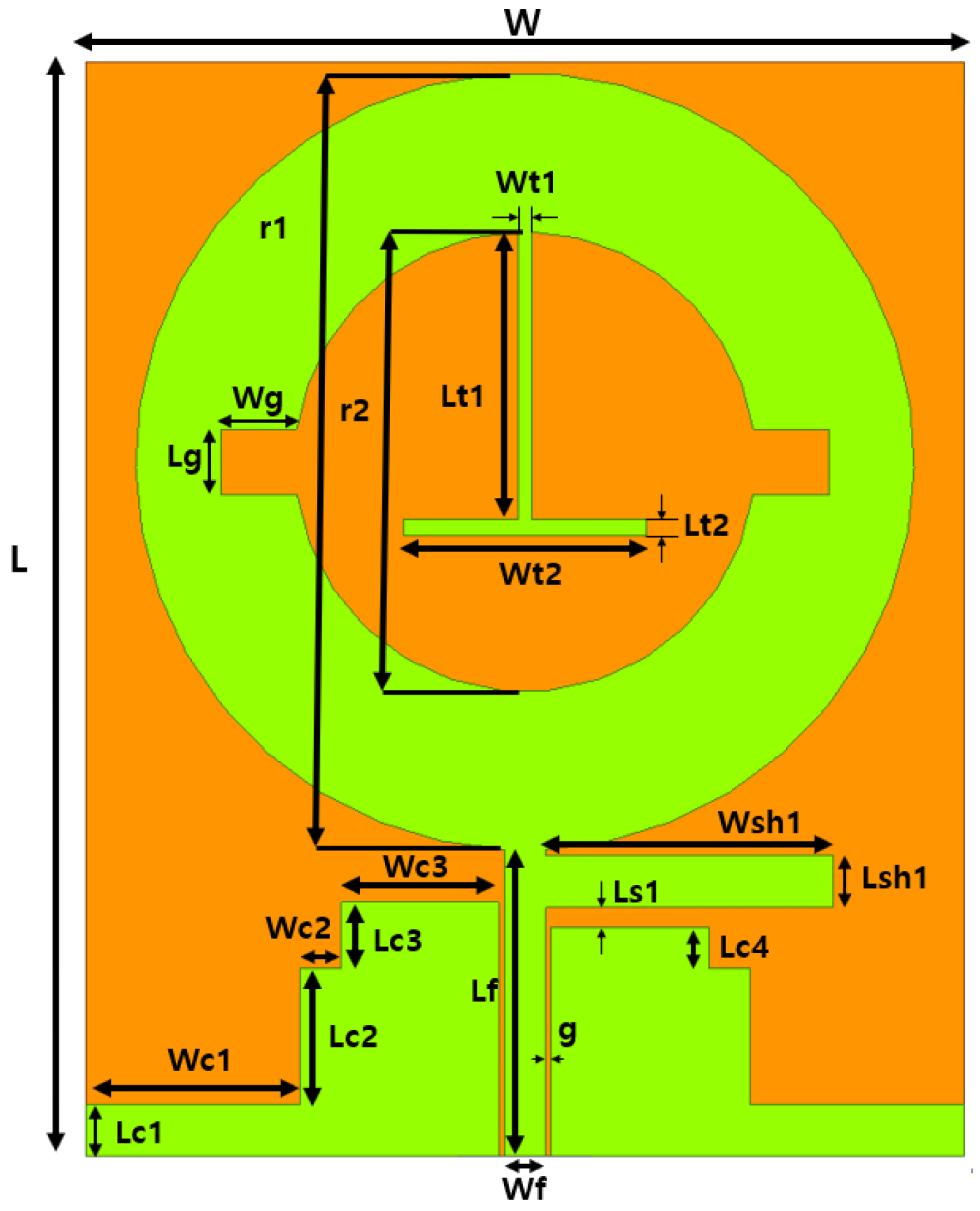
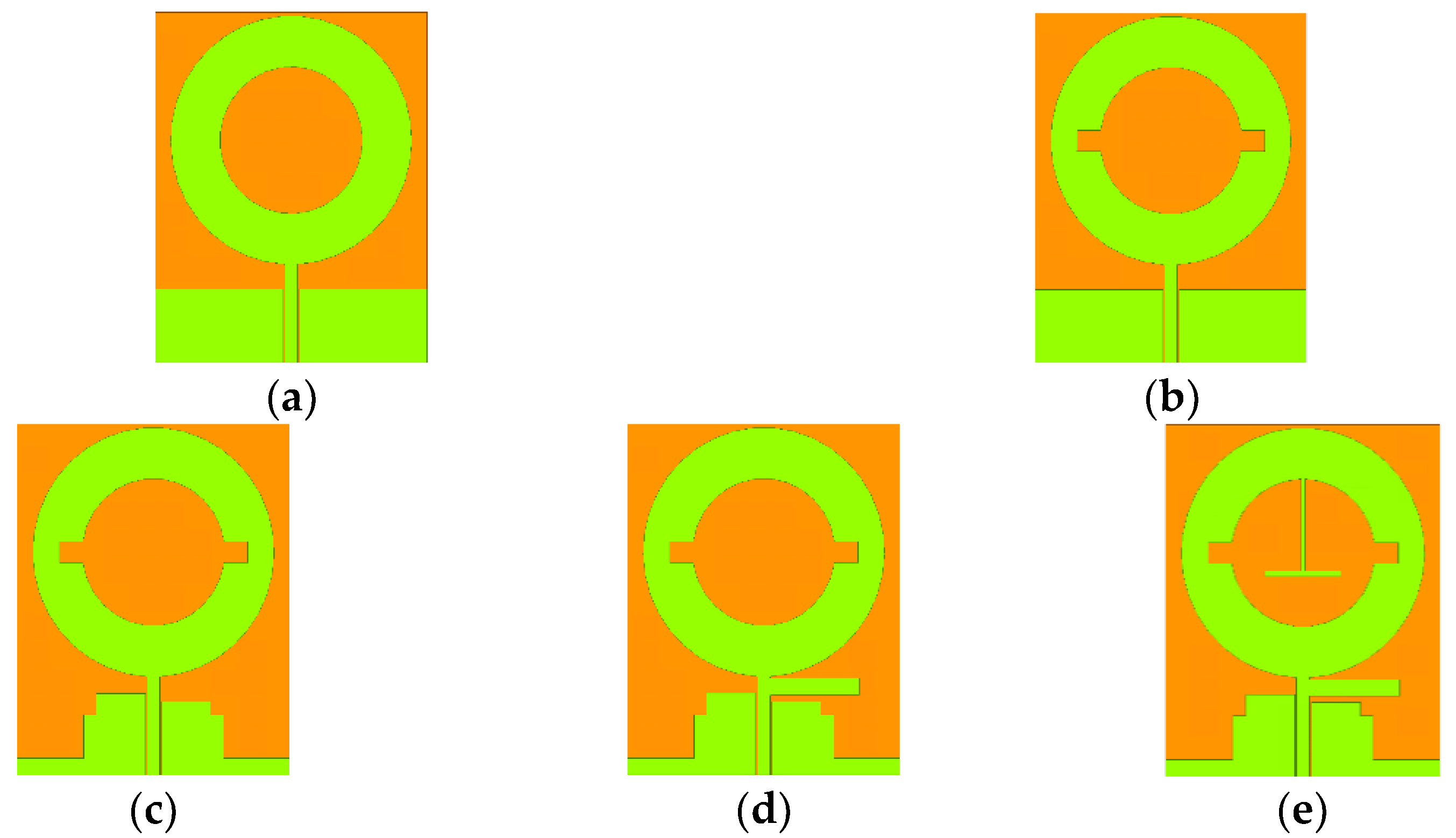

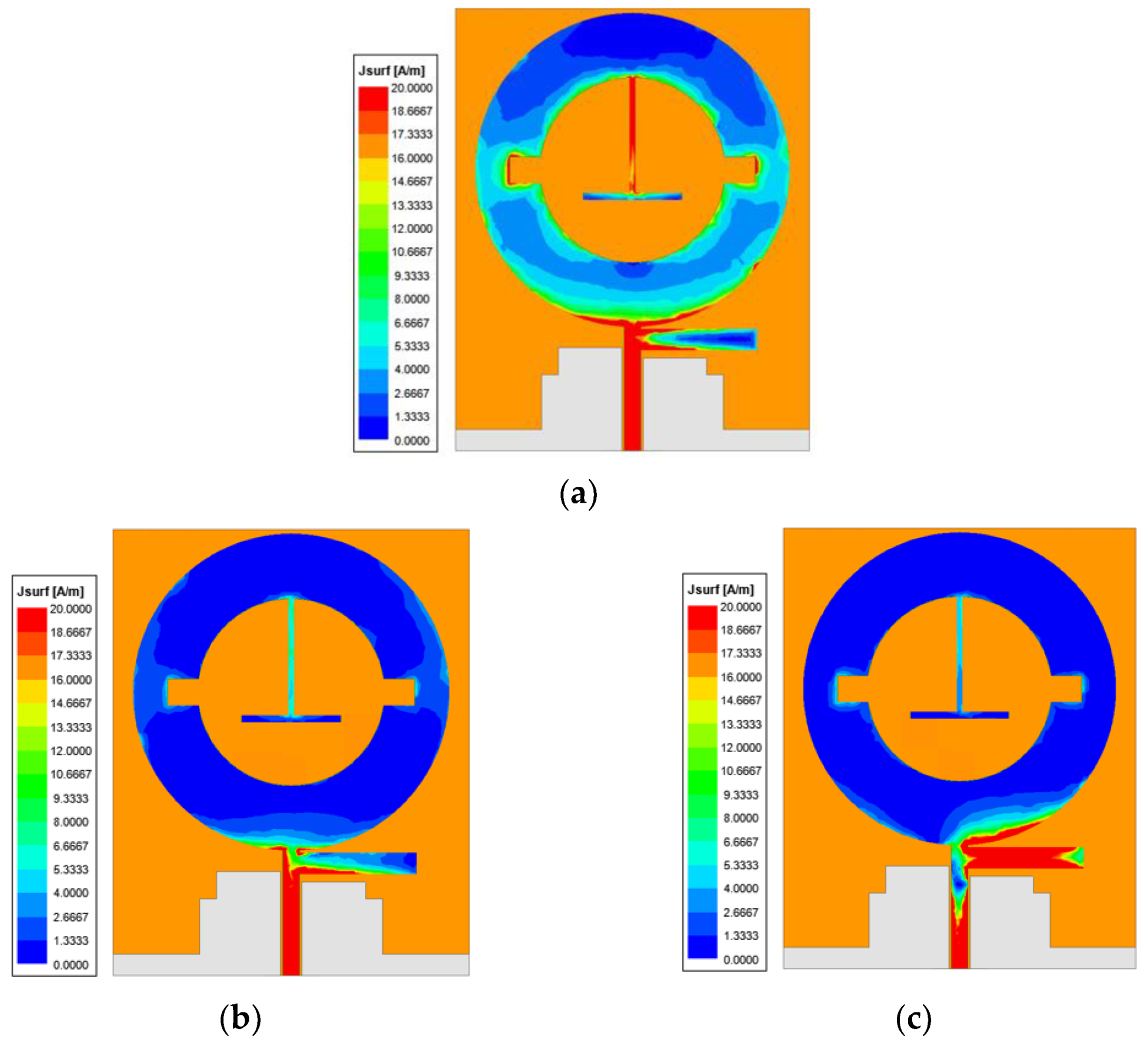
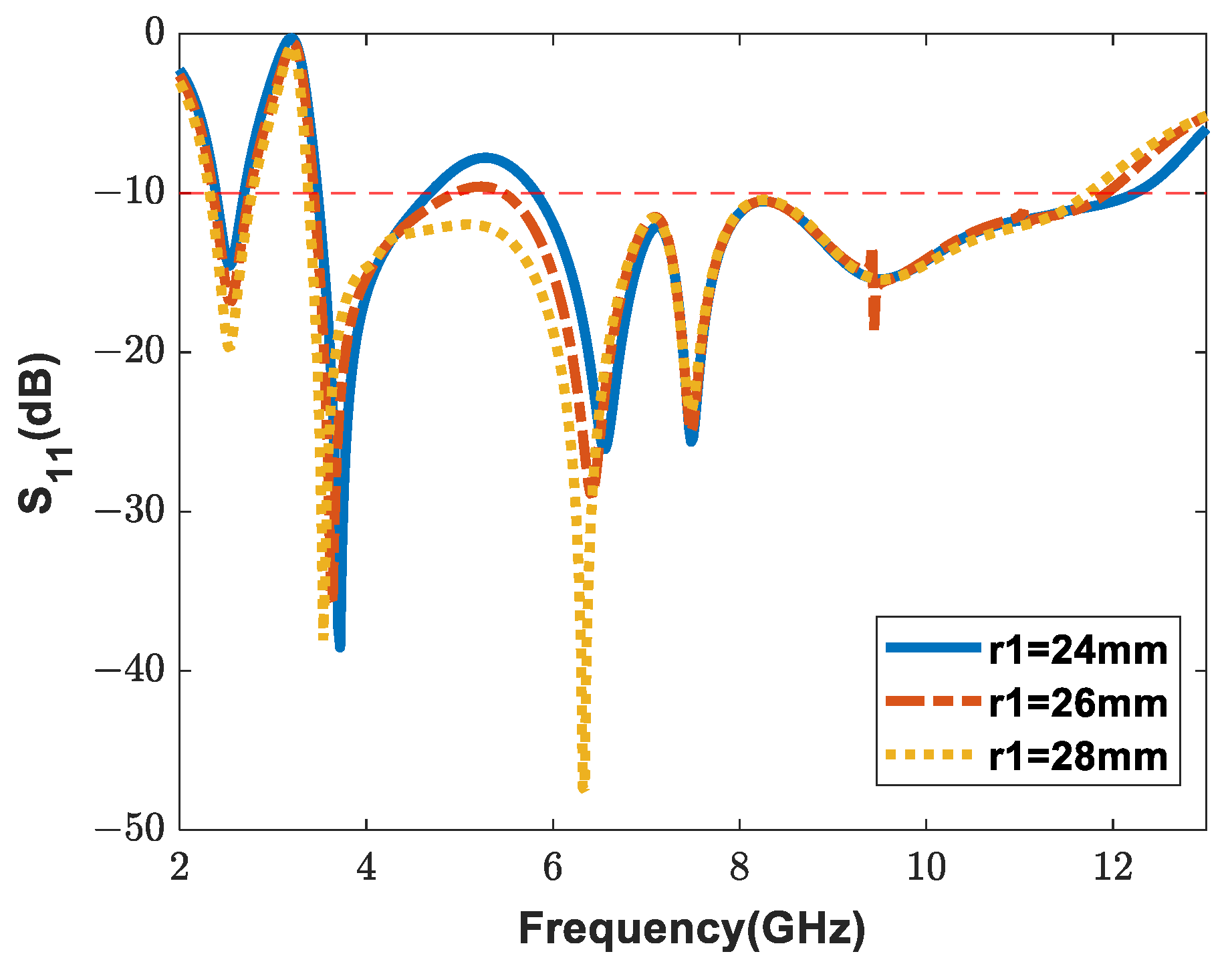
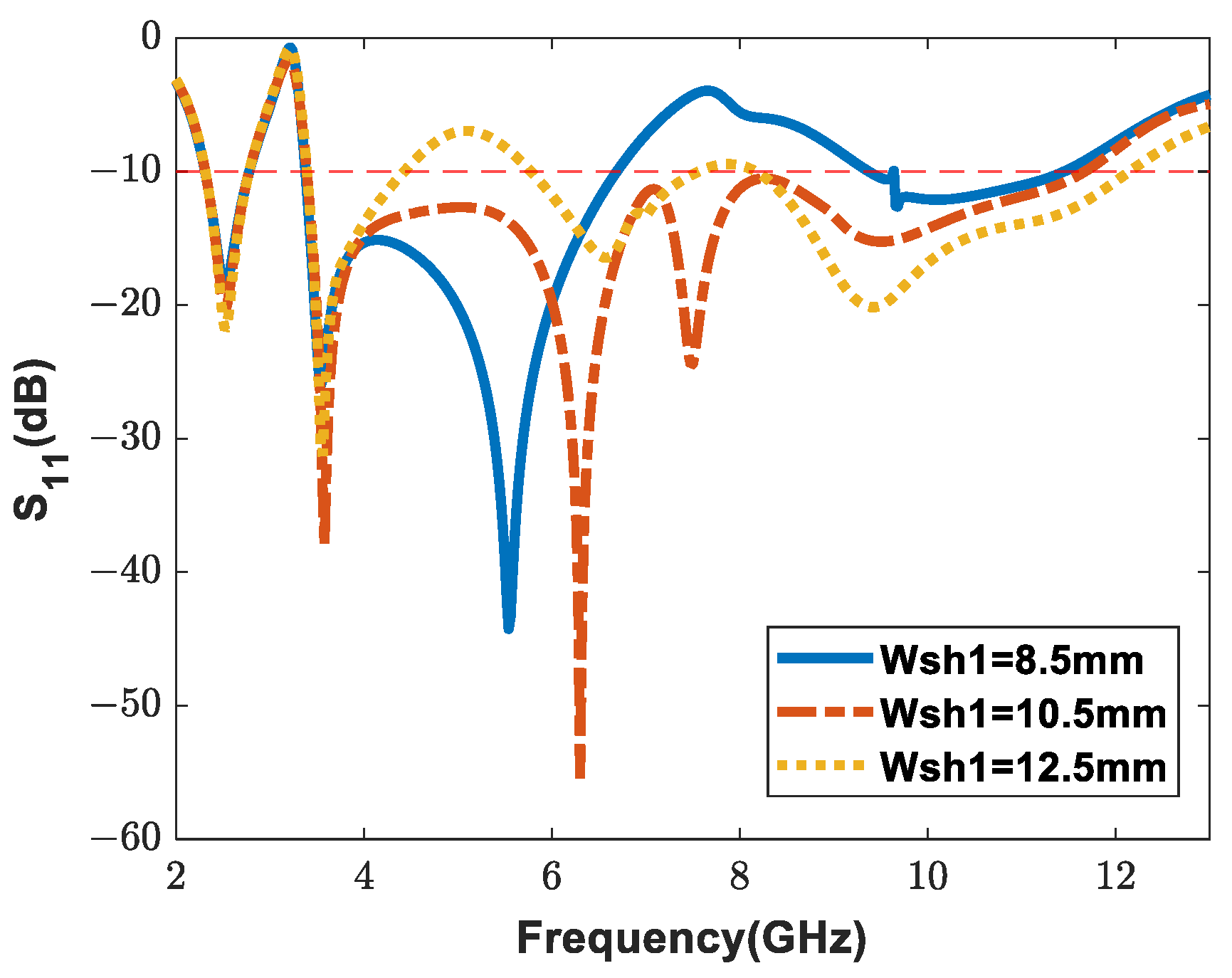
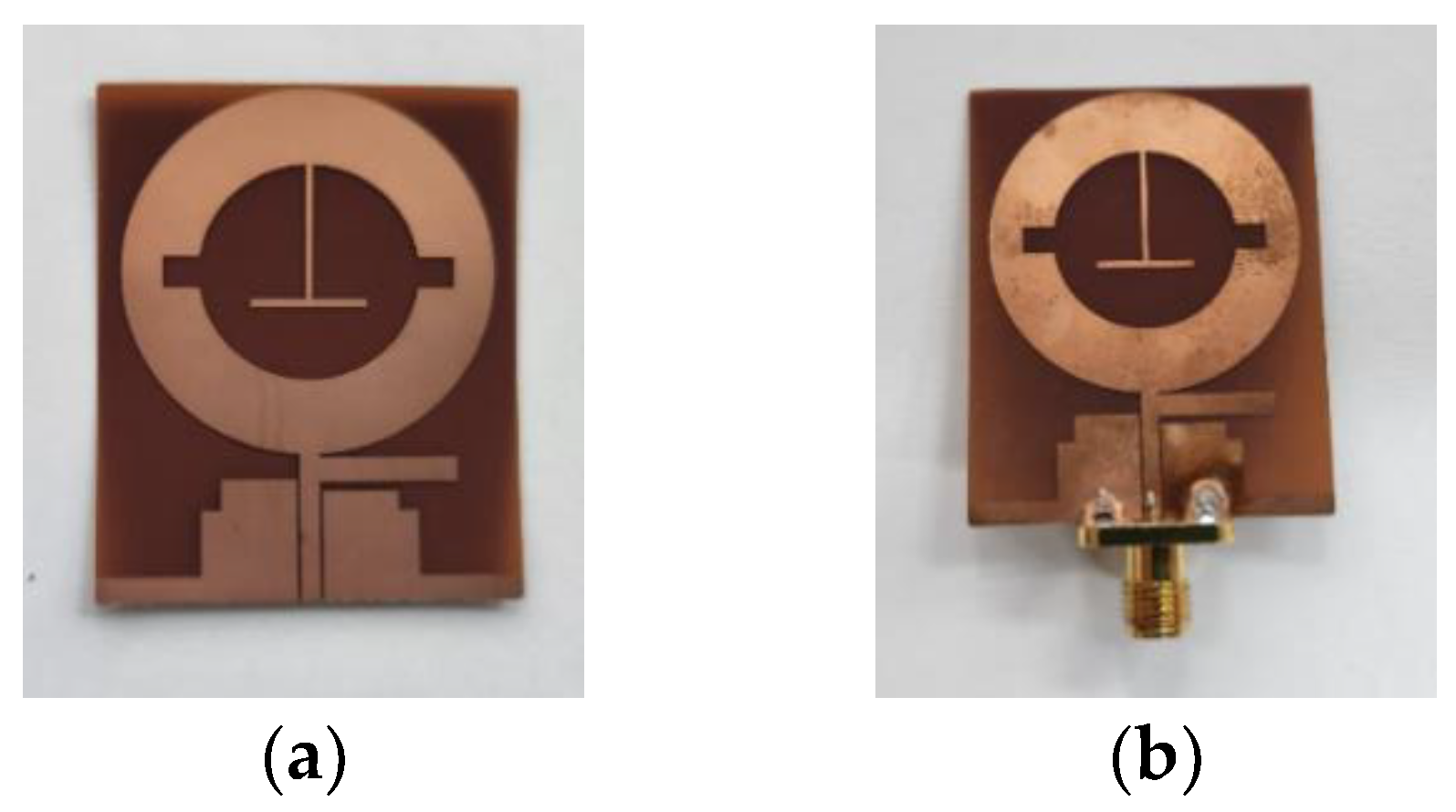
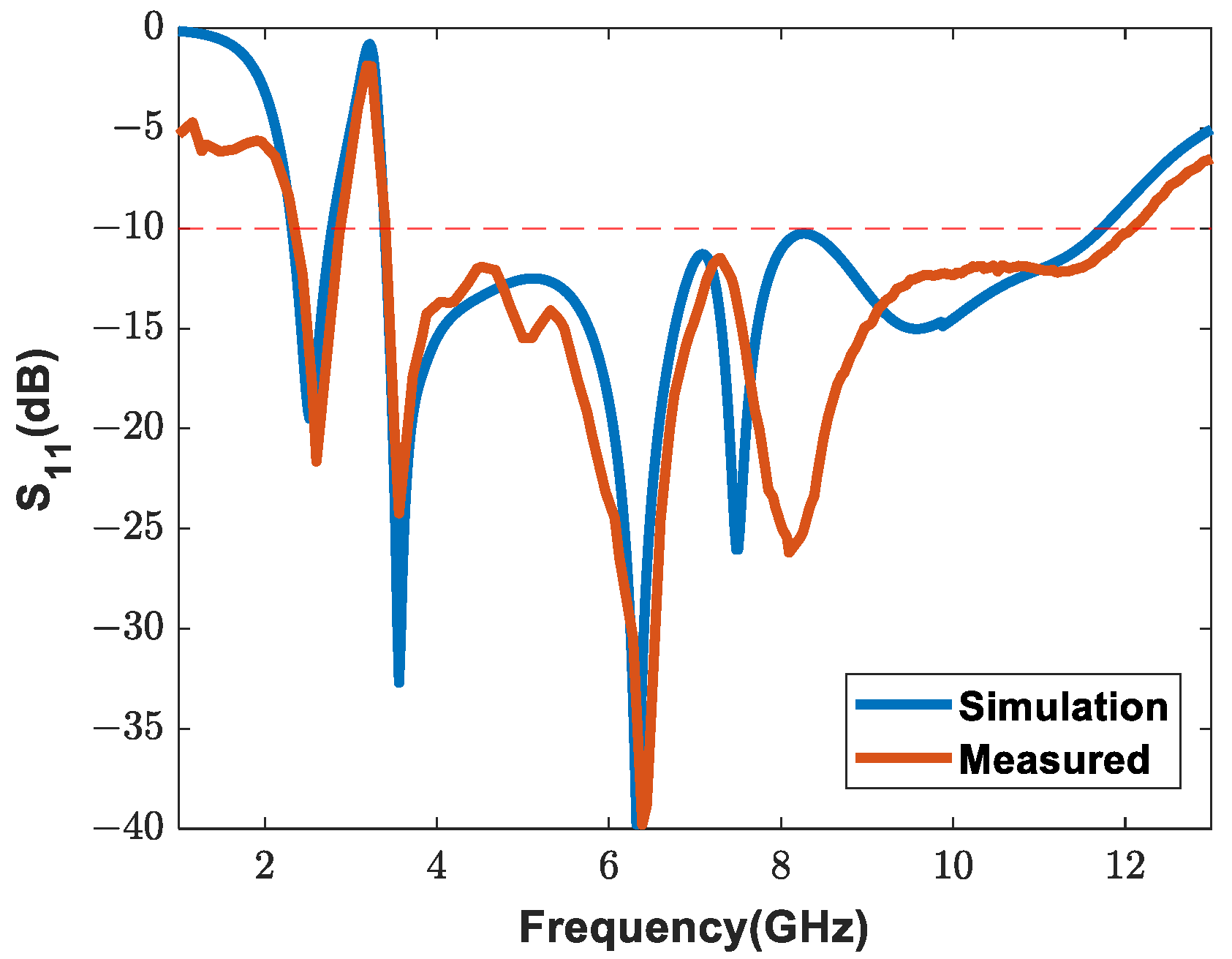

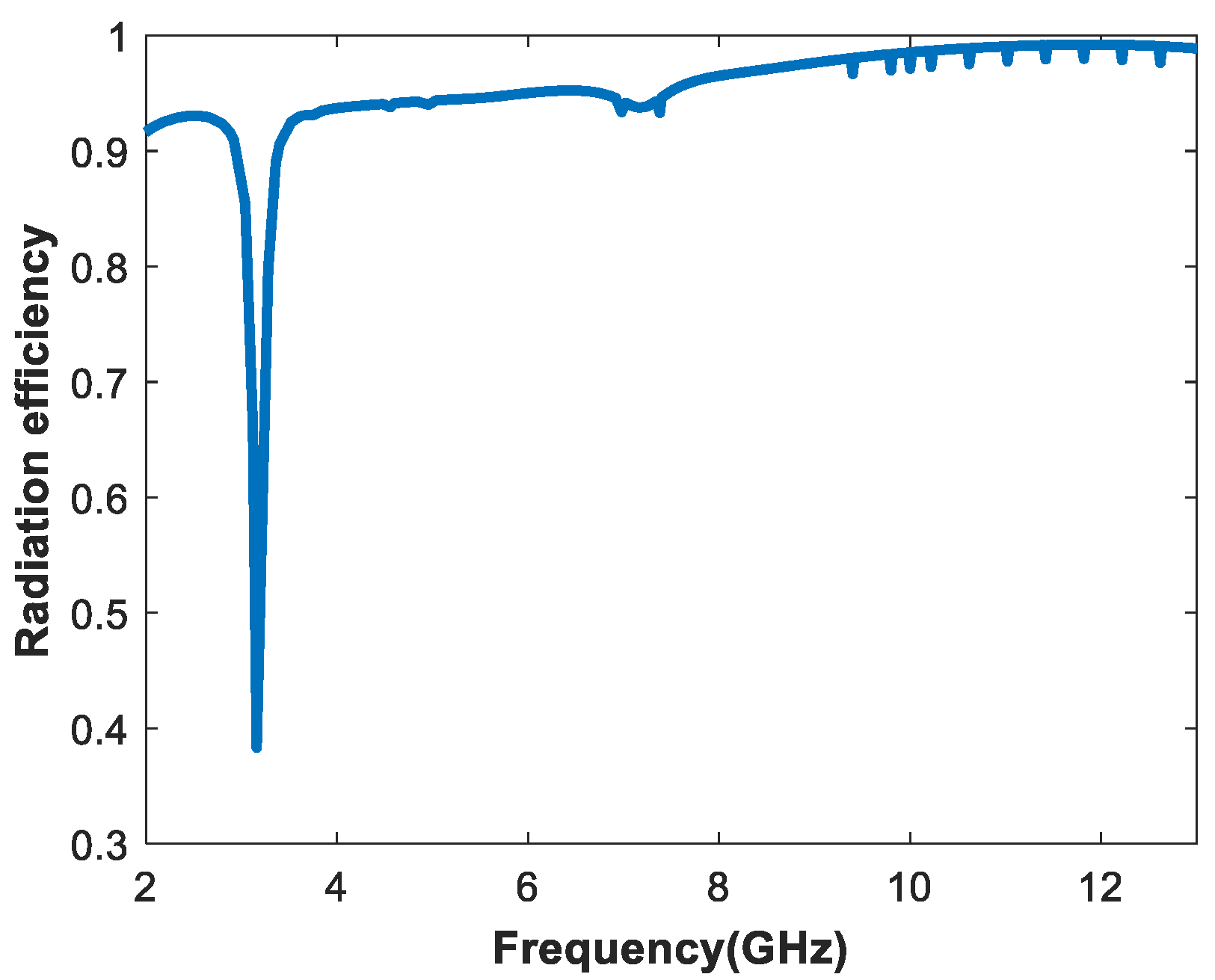
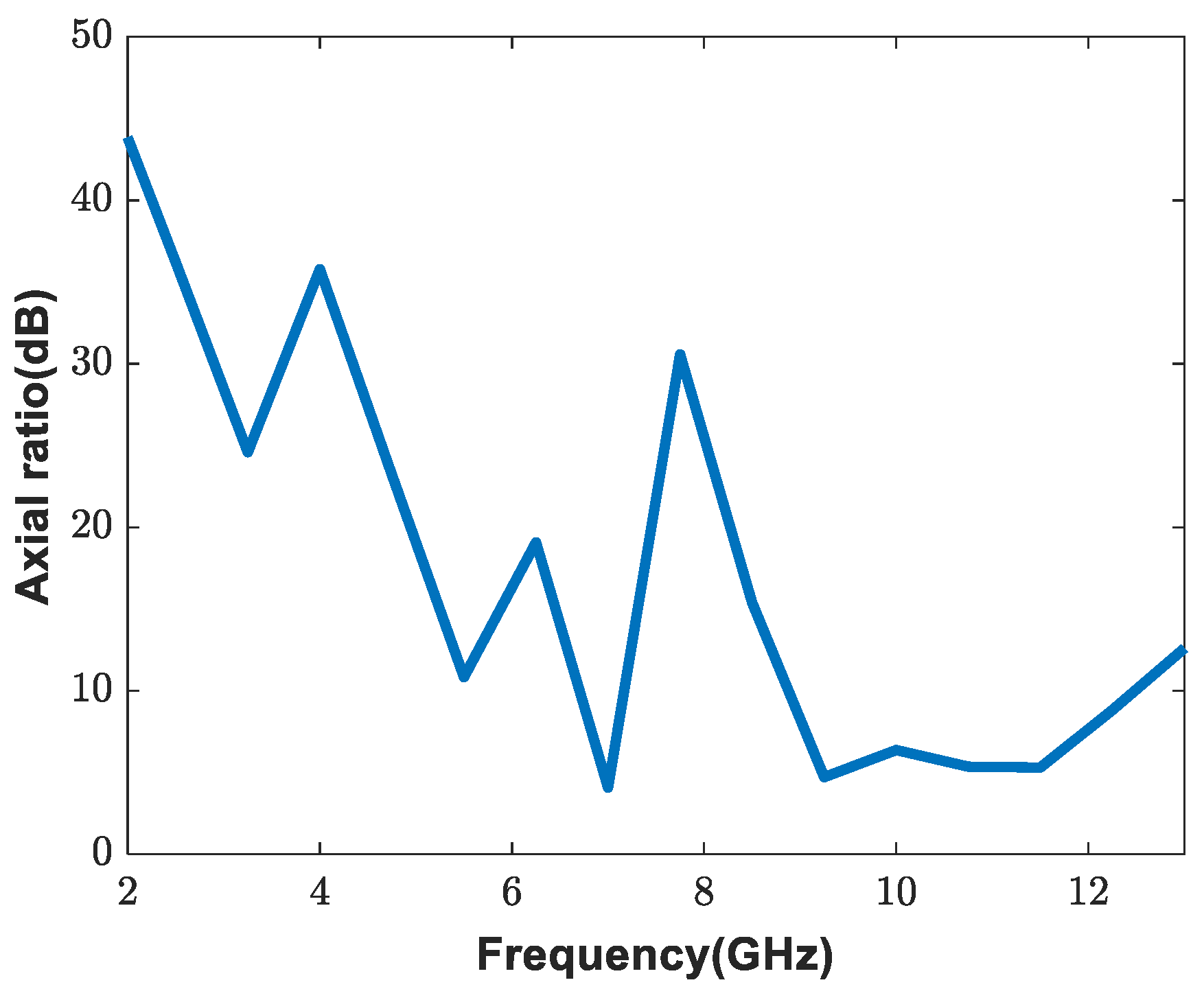
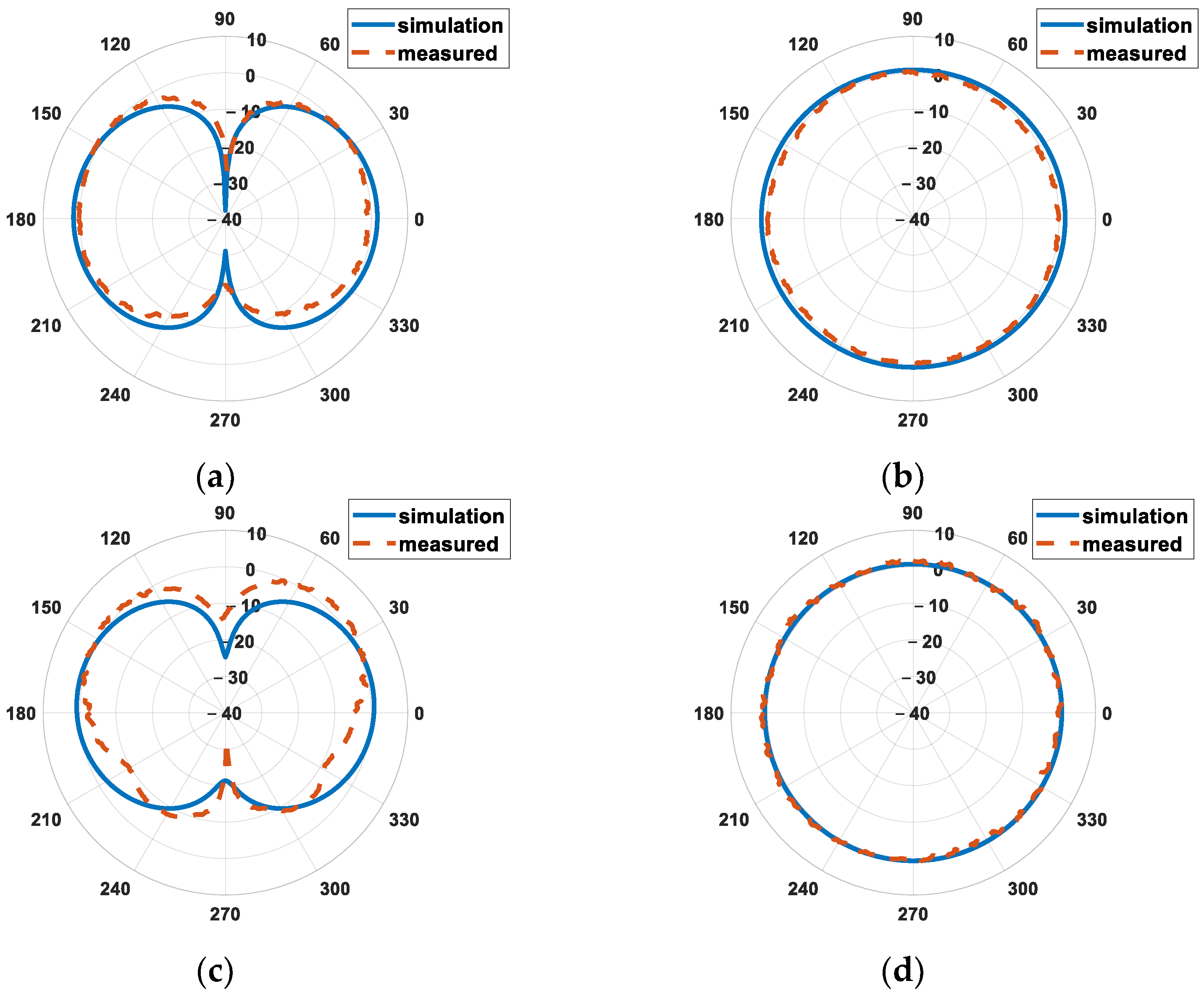
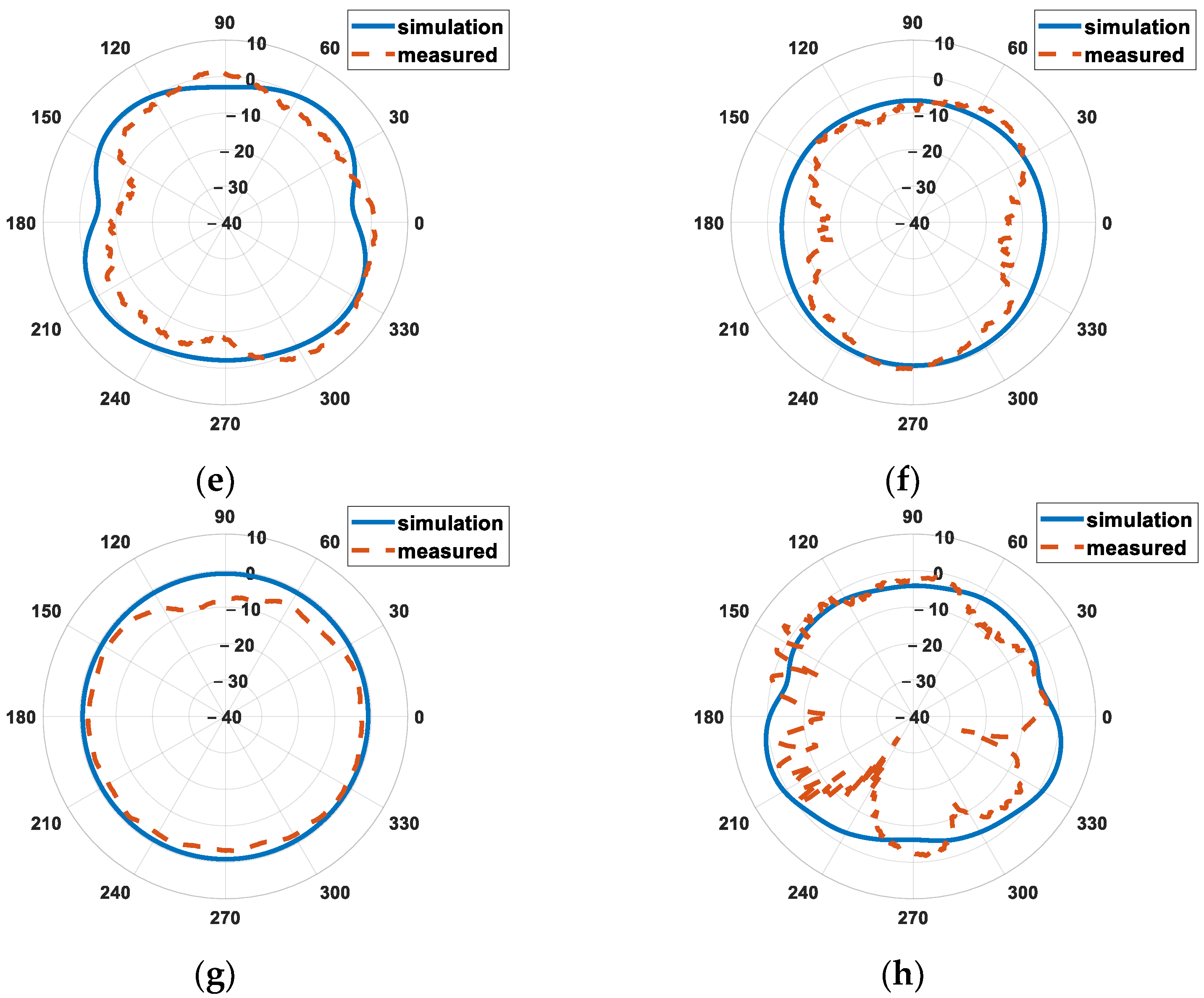

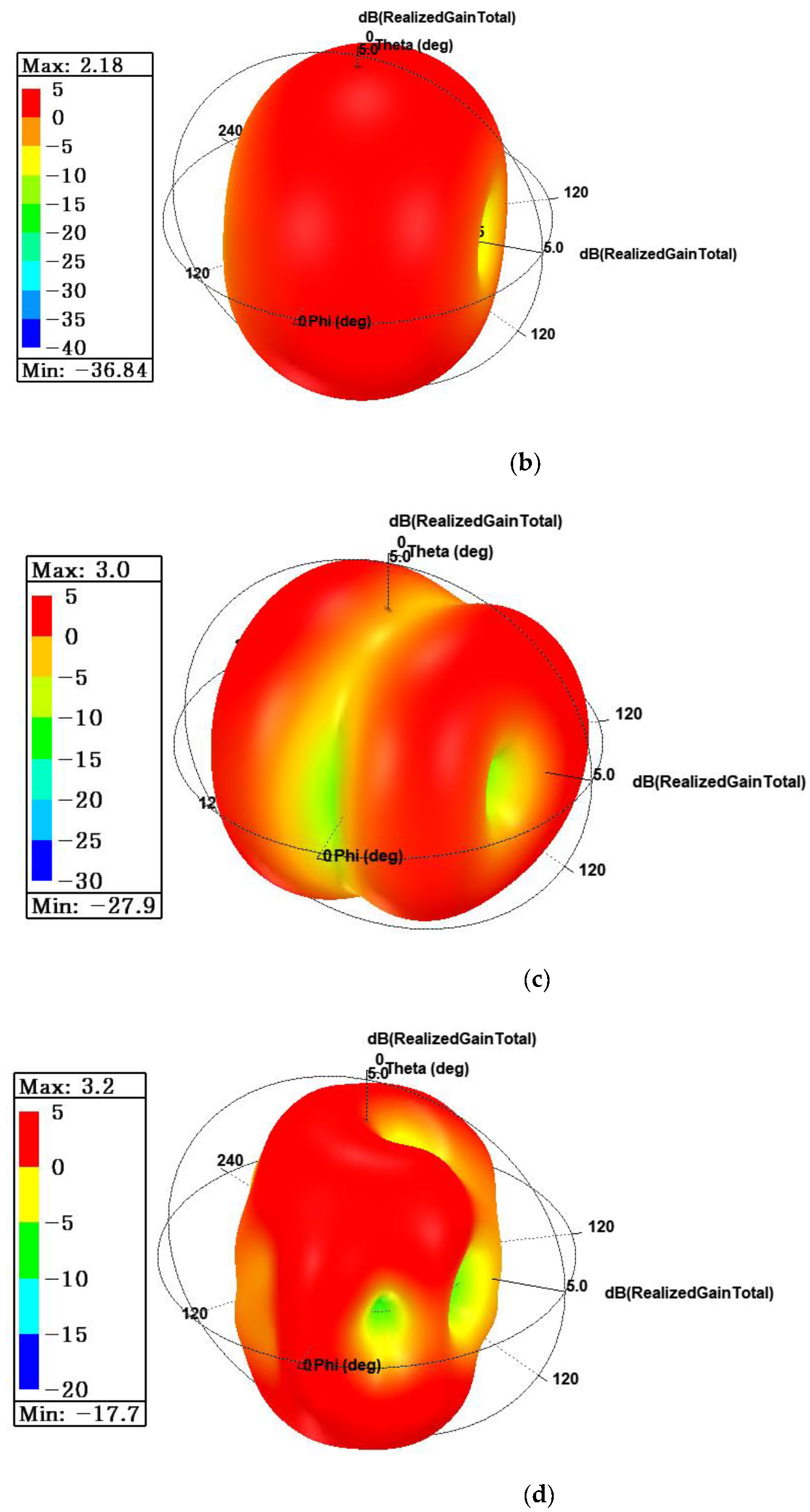
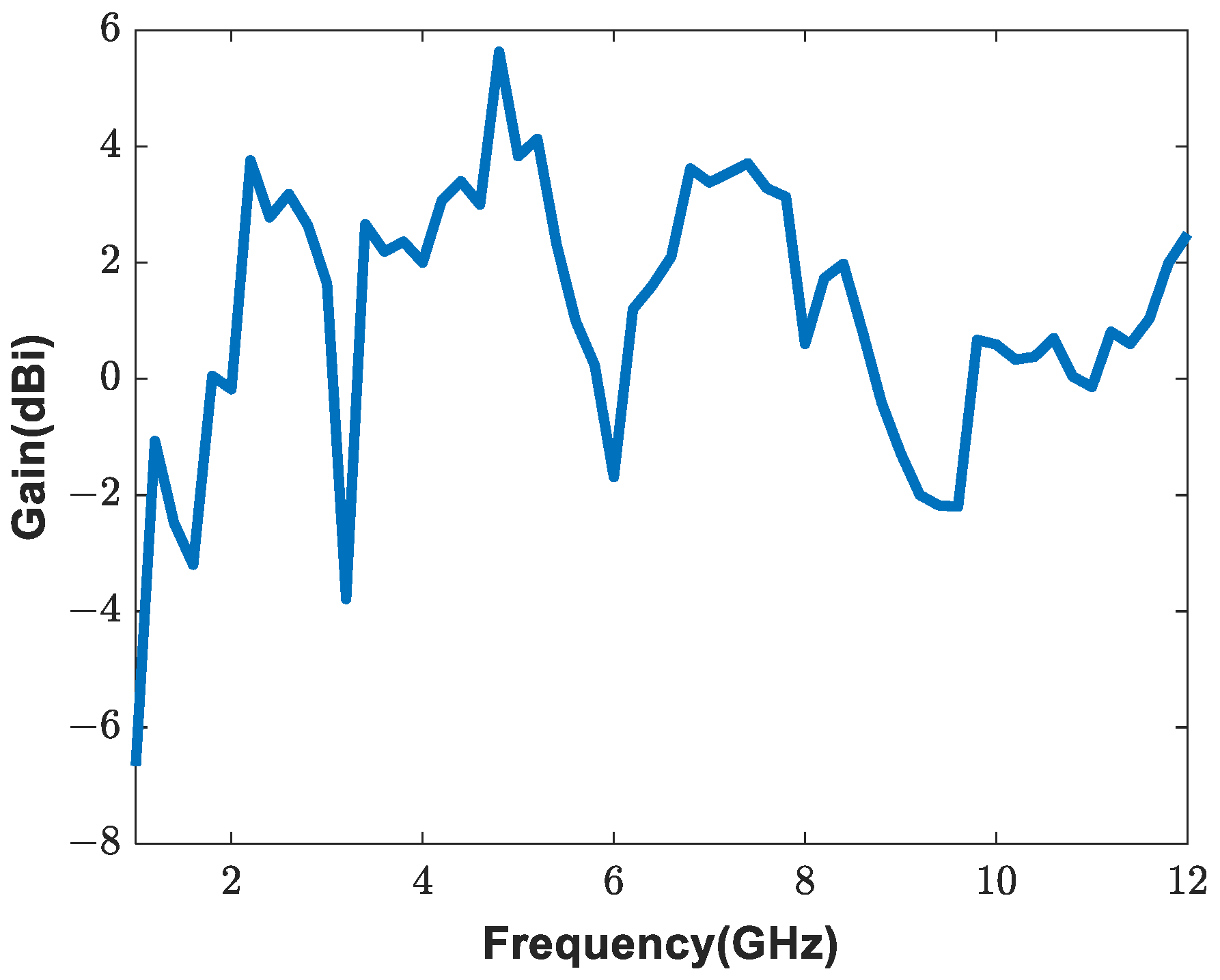
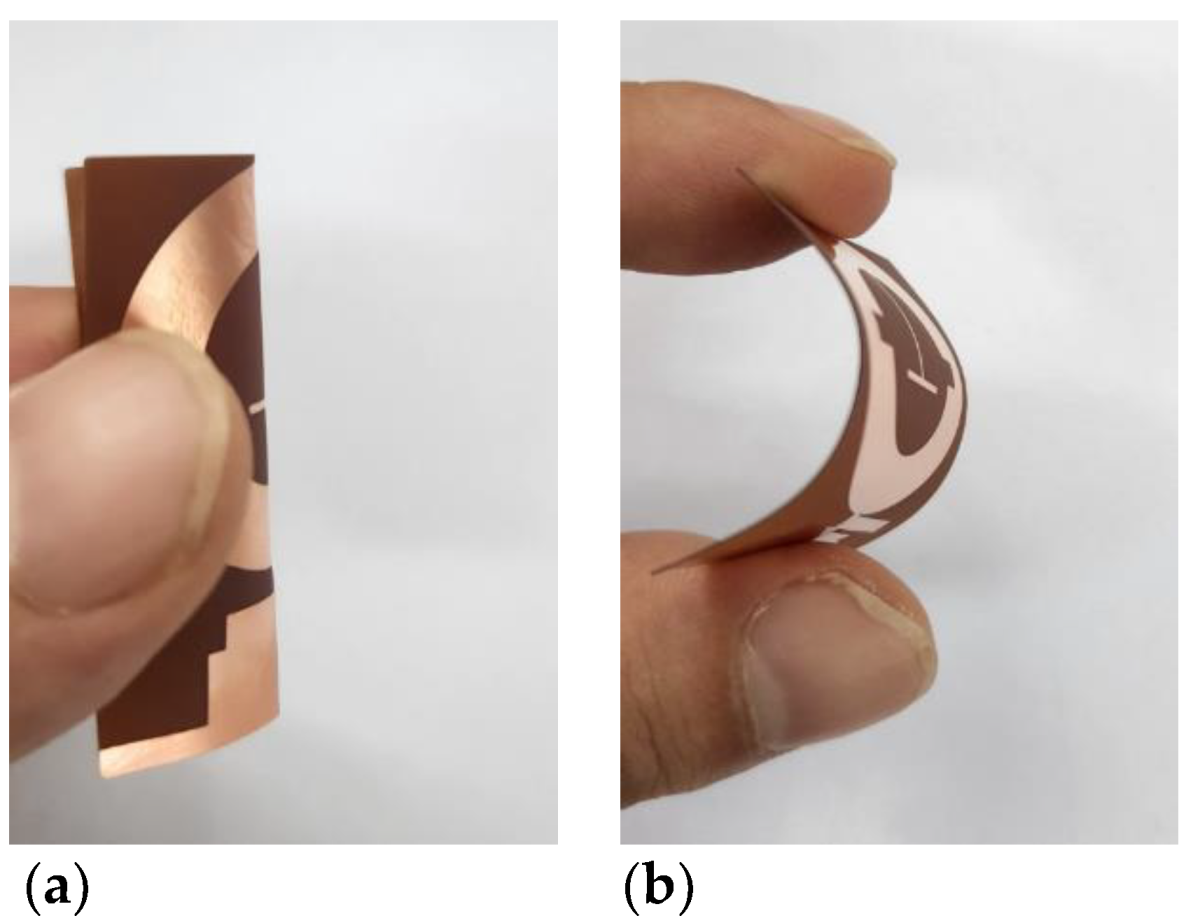
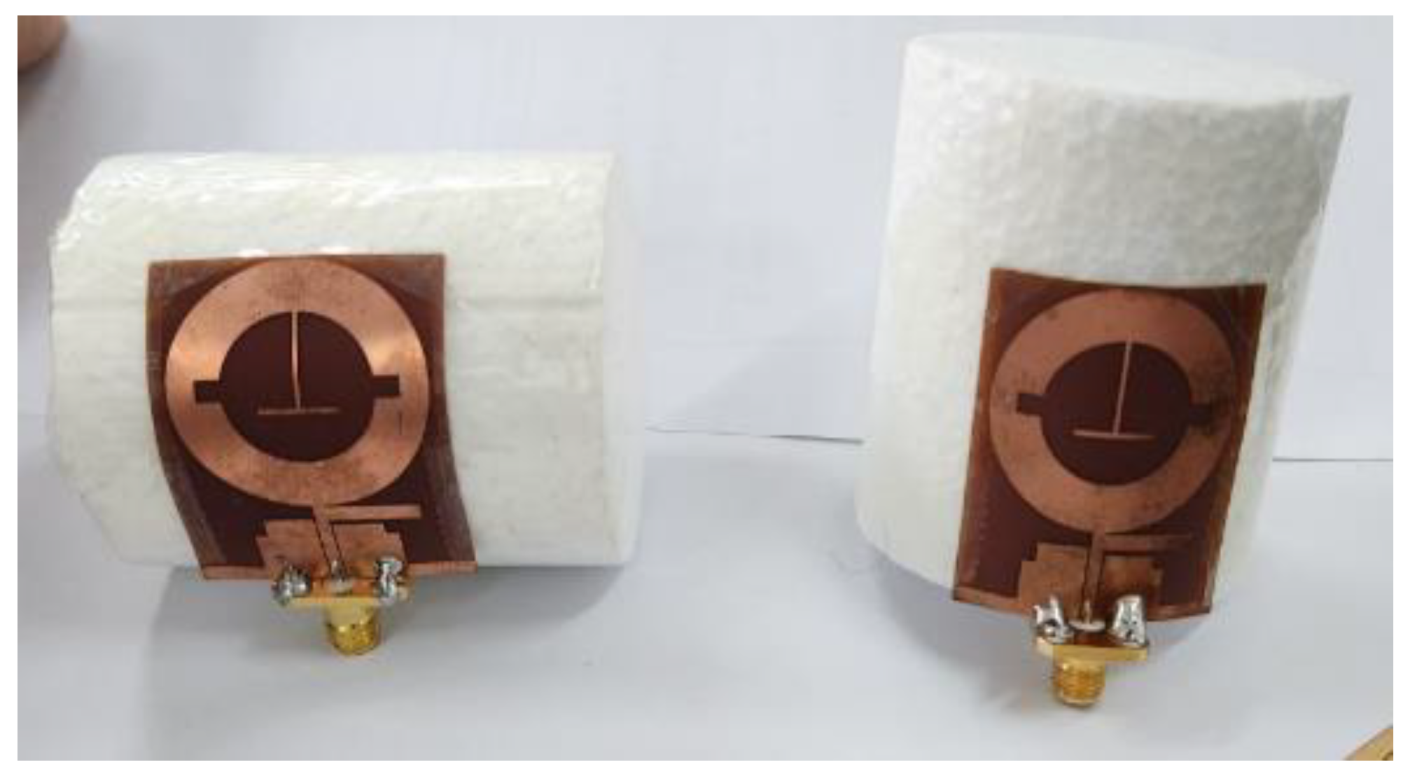
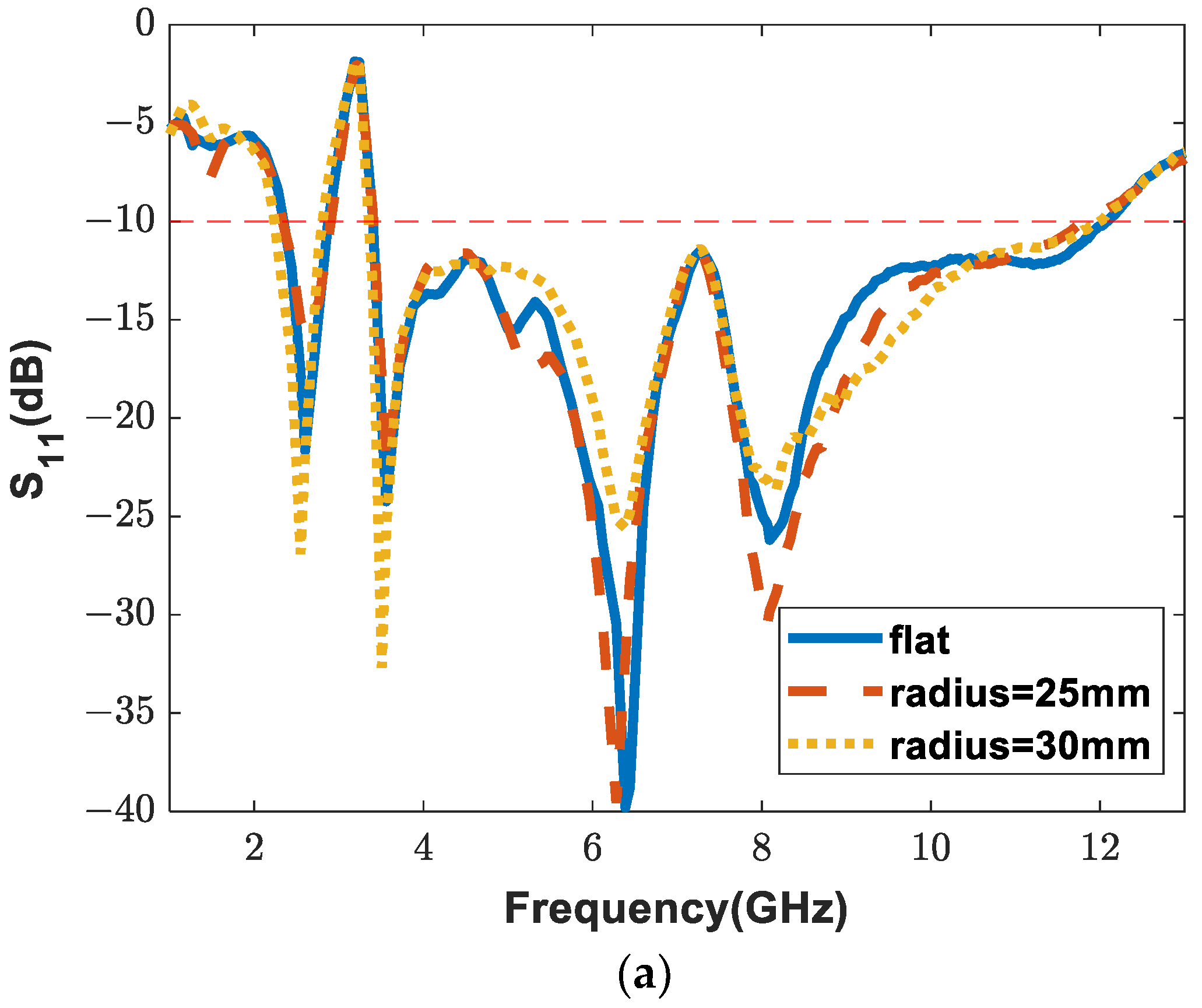

| W | L | Wt1 | Lt1 | Wt2 | Lt2 |
| 32 | 40 | 0.5 | 10.5 | 8.9 | 0.6 |
| Wg | Lg | r1 | r2 | Wsh1 | Lsh1 |
| 2.9 | 2.4 | 28.4 | 16.8 | 10.5 | 1.9 |
| Lc1 | Lc2 | Lc3 | Lc4 | Wc1 | Wc2 |
| 1.9 | 5 | 2.4 | 1.5 | 7.8 | 1.5 |
| Wc3 | Ls1 | Wf | Lf | g | |
| 5.75 | 0.7 | 1.5 | 11.2 | 0.2 |
| Ref. No. | Dimension | Bandwidth (GHz) | Peak Gain (dBi) | Application |
|---|---|---|---|---|
| [11] | ( | 1–8 | 3.1 | UWB |
| [12] | ( | 2.4–2.45 5.15–7.1 | 6.85 | 5G/WLAN |
| [13] | ( | 2.33–2.54 3.24–3.91 4.80–8.07 | 4.03 | WiMAX/WLAN/5G |
| [14] | ( | 1.4–16.4 | 5.19 | UWB |
| [15] | ( | 2.2–25 | 4.5 | UWB |
| [16] | ( | 2–20 | 6.36 | UWB |
| [17] | ( | 2.9–3.25 3.97–6.24 7.38–12 | 6.3 | WiMAX/UWB |
| Proposed antenna | ( | 2.36~2.87 3.4~12 | 5.63 | WLAN/C-band/X-band |
Publisher’s Note: MDPI stays neutral with regard to jurisdictional claims in published maps and institutional affiliations. |
© 2022 by the authors. Licensee MDPI, Basel, Switzerland. This article is an open access article distributed under the terms and conditions of the Creative Commons Attribution (CC BY) license (https://creativecommons.org/licenses/by/4.0/).
Share and Cite
Lee, H.; Park, Y.B. Wideband Ring-Monopole Flexible Antenna with Stub for WLAN/C-Band/X-Band Applications. Appl. Sci. 2022, 12, 10717. https://doi.org/10.3390/app122110717
Lee H, Park YB. Wideband Ring-Monopole Flexible Antenna with Stub for WLAN/C-Band/X-Band Applications. Applied Sciences. 2022; 12(21):10717. https://doi.org/10.3390/app122110717
Chicago/Turabian StyleLee, Hoosung, and Yong Bae Park. 2022. "Wideband Ring-Monopole Flexible Antenna with Stub for WLAN/C-Band/X-Band Applications" Applied Sciences 12, no. 21: 10717. https://doi.org/10.3390/app122110717
APA StyleLee, H., & Park, Y. B. (2022). Wideband Ring-Monopole Flexible Antenna with Stub for WLAN/C-Band/X-Band Applications. Applied Sciences, 12(21), 10717. https://doi.org/10.3390/app122110717





